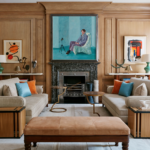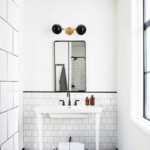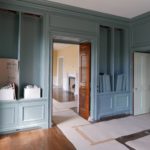We interior designers often have the perfect home set up in our minds. One that frequently includes high ceilings, amazing views, and smart architecture. However, finding a structure that meet these requirements, in the right location, and at the right price can be a challenge. Of course, if you find yourself in such a situation you always have the option to build your own home, a topic you can find out more about in my post below.

Designing To Build Your Own Home
Before you can lay a single brick, you will need to complete the design process. The first aspect of designing your dream home is to ask what you want from it. This will give you the skeleton on which to build all of your ideas around. This information can then be turned into a document known as a brief, something you can provide to your design team and that they can use to create your dream home.
Also at the design stage, you need to consider who you will need to employ for your construction project. Yes, this will include architects for the design, but also construction workers, and specialists when it comes to installing particular construction features.
Do remember though, that the design brief will always be a work in progress. This means that it will continue to develop as the process of building your house does, so it definitely won’t look the same at the end as when you first wrote it.
Foundations
Once you have the design process sorted it’s time to start work on the construction. The first task of which is to lay proper foundations. Of course, foundations are crucial to any building because they are what anchor and strengthen the property, ensuring it will survive in the long term.
There are two options to consider when it comes to laying foundations, strip or engineered. Strip foundations are simple trenches filled with concrete that are usually suitable for places where the ground is unproblematic.
The other option is engineered foundations, usually made from of piling and aggregate piers. These work by compacting the ground around them and can increase bearing pressure and strength of your homes’ foundation. Something that makes them suitable for less stable sites, or tricky customized builds.
Building The Outer Walls
Once the fountains are laid, it’s time to construct the outer shell of the property. Usually, the exterior walls are erected first. Then a roof is added to protect the inside from the rain, as are doors and windows. Lastly, the inner walls and division will be installed.
Although, it is essential that you monitor this latter process carefully. Otherwise, you can end up with room sizes that are not what you expect or want.
Finishing
The last stage is finishing the property. This consists of plastering the walls, adding baseboards and moldings, as well as installing the visible plumbing and appliances.
Of course, for we interior designers this is a crucial stage because it provides the blank canvas on which we can get to work. Which is after all one of the key reason to take on building a house in the first place!




